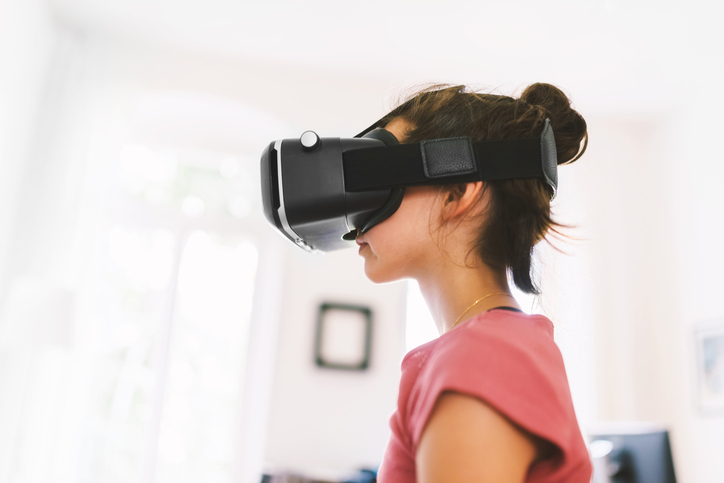Violence against healthcare workers is not a new problem, but it’s one that’s getting more severe. The Occupational Safety and Health Administration (OSHA) estimates that nearly 75% of all workplace assaults take place in healthcare settings, and recent survey data shows that about two-thirds of healthcare employees have felt physically unsafe at their job.
Legislators are stepping in to address this pressing issue, given that fear of violence is driving more workers away from the healthcare field and exacerbating the workforce crisis. For example, two U.S. senators introduced bipartisan legislation in September to address this concerning trend by giving healthcare workers federal protections that mirror those for aircraft and airport workers. Tech companies are working on a remedy, too. One such example is Canopy — it emerged from stealth on Wednesday as a startup focused on protecting healthcare staff from violence.

With the Rise of AI, What IP Disputes in Healthcare Are Likely to Emerge?
Munck Wilson Mandala Partner Greg Howison shared his perspective on some of the legal ramifications around AI, IP, connected devices and the data they generate, in response to emailed questions.
The Palo Alto-based company has been in stealth for four years, during which it has been “focusing on building product and getting it right,” said CEO Shan Sinha. While operating in stealth mode, Canopy’s technology was only available under the brand names of its distribution partners.
Now that it has exited from stealth, Canopy will sell its product directly to health systems — no longer through white label distribution partners.
The startup’s product is called Canopy Protect. It involves wearable monitors — about the size of a car key fob — that healthcare staff can press when they feel threatened, as well as a system that allows a hospital to monitor all physical areas of the organization.
“We essentially created a wearable panic button that individuals can carry with them on their scrubs or on their badge reels,” Sinha explained.
Canopy installs a network of discrete sensors all over the facility, which are connected to both the wearable buttons and the startup’s cloud-based service. When a worker presses the button, an alert is immediately sent to the cloud so that Canopy’s team can intervene.
Each button is assigned to a specific individual, so when an employee presses theirs, Canopy immediately knows their precise location within the facility, Sinha noted.
“Using that information, we can notify central security and we can notify nearby coworkers so that they can all mobilize to come together to help the situation, typically before things get out of hand and escalate,” he said. “And all of that works within a matter of seconds — in these types of incidents, every second matters.”
Sinha acknowledged that it’s not always possible for a staff member to recognize that their situation is dangerous before it has escalated. But in many cases, they can. In these instances, co-workers and security personnel are often trained on a set of de-escalation techniques that “lower the temperature” and help protect employees from violence — which is why health systems need a way to get these people in the room as soon as possible, he explained.
Along with its emergence from stealth, Canopy also announced new updates to its technology: a 15-year battery life for the buttons, new button styles to improve wearability and outdoor functionalities. Canopy Protect’s hardware suite is now designed to work in all indoor and outdoor locations across a health system — even if an employee needs to press the button when they are 10 floors underground in a parking structure, Sinha said.
“What we have found in working with our customers is that incidents in patient rooms or in buildings are only a fraction of the incidents that workers experience. It turns out that one of the most common areas where incidents occur is on the way into work or on the way home from work in parking lots and parking garages,” he pointed out.
More than 30 health systems have deployed Canopy’s technology across 800 different facilities, meaning that the startup’s buttons are currently protecting about 211,000 people, Sinha declared.
The product is sold using a software as a service (SaaS) model, but Sinha declined to disclose what the precise fees are.
“What I can tell you is that we’ve designed the system so that every individual in your organization can be protected. Most organizations adopt that model, and it tends to end up costing less than a cup of Starbucks per month for each individual worker. So it ends up being extremely affordable for organizations when deployed across the entire enterprise,” he noted.
One of Canopy’s main competitors are safety-focused feature add-ons to asset tracking systems, Sinha said. In other words, many health systems deploy technology to track things like their IVs and wheelchair pumps, and then add on a duress button feature to help protect their staff.
These add-ons tend to be expensive and don’t work very well, though, Sinha argued. They also typically aren’t wireless, nor do they feature a lightweight, wearable device, he added.
There are also some other companies that sell mobile panic buttons for healthcare staff, such as Midmark and Rave Mobile Safety. Sinha thinks Canopy sets itself apart for two main reasons, with the first being that Canopy ensures its cloud-based services are always reliable.
“The system is like 911 — when an individual needs to use it, it just has to work. They don’t have to use it that often, but when they press that button, it has to work,” he declared.
The other differentiating factor is that Canopy operationalizes its services across the entire health system. When a health system has tens of thousands of employees, figuring out things like how to distribute the buttons and train staff on how to use them becomes very difficult, Sinha pointed out.
“We’ve really thought through those details and the logistics associated with that. Getting all of those little details right is what we think ultimately ensures the success of our product. So the differentiation really is about how we deliver our product as a service — the full end-to-end stack — and the fact that we work in partnership with our customers to think through all the little details that are required to make this successful,” he said.
Photo: okanmetin, Getty Images















